Abstract
1. Capsaicin, the potent algesic substance in chilli peppers, was applied topically to, or injected intradermally into or outside, the receptive fields of 14 C mechanoheat (polymodal) nociceptor units in awake humans. The nociceptor discharges were recorded using microelectrodes inserted into the peroneal nerve. Simultaneously, the subjects estimated the magnitude of pain as a function of time during the first 1.5-3 min after injection. Magnitude estimates of pain produced by heat and/or mechanical stimuli were also obtained before and after capsaicin in order to assess the magnitude of cutaneous hyperalgesia. 2. An injection within or adjacent to, but not greater than 4 mm outside, the receptive fields of C nociceptor units evoked discharges. The magnitude of pain and the mean discharge rate of the units were both maximal on injection, declining rapidly over the next 1-3 min, which indicates that these nociceptors contribute to the magnitude and duration of pain evoked by capsaicin injection. 3. Reduced or abolished excitability in C nociceptors after capsaicin injection within the receptive fields correlated with analgesia at the injection site. 4. Capsaicin injection produced a wide surround area of mechanical hyperalgesia, i.e. pain on gently stroking the skin or abnormally intense pain on punctate stimulation. Nevertheless, the injections did not lower the thresholds or enhance the responses to such mechanical stimuli of C nociceptor units with their receptive fields in this hyperalgesic area. 5. Topical application of capsaicin evoked on-going discharges in four units tested. Both nociceptor response thresholds and pain thresholds were lowered for heat from 45 to 35 degrees C. A newly developed weak response to stroking the skin in two units after capsaicin was accompanied by faint pain. 6. On-going activity in sensitized C nociceptors and concomitant pain were effectively reduced by cooling the skin in the receptive area. 7. It is concluded that activity in C mechanoheat (polymodal) nociceptors contributes to the magnitude and duration of pain evoked by intradermal injection of capsaicin. The after-effects of capsaicin on C nociceptor excitability depend on concentration: high concentration (by injection) leads to desensitization, whereas low concentration (by topical application) leads to sensitization. On-going discharges and lowered response thresholds to heat in these units after topical application of capsaicin correlates with background pain as well as lowered pain thresholds to heat of the affected skin (primary hyperalgesia). The unchanged responsiveness of C nociceptors in the skin well outside the injection area indicates that central rather than peripheral sensitization accounts for the observed mechanical hyperalgesia in this region (secondary hyperalgesia).
Full text
PDF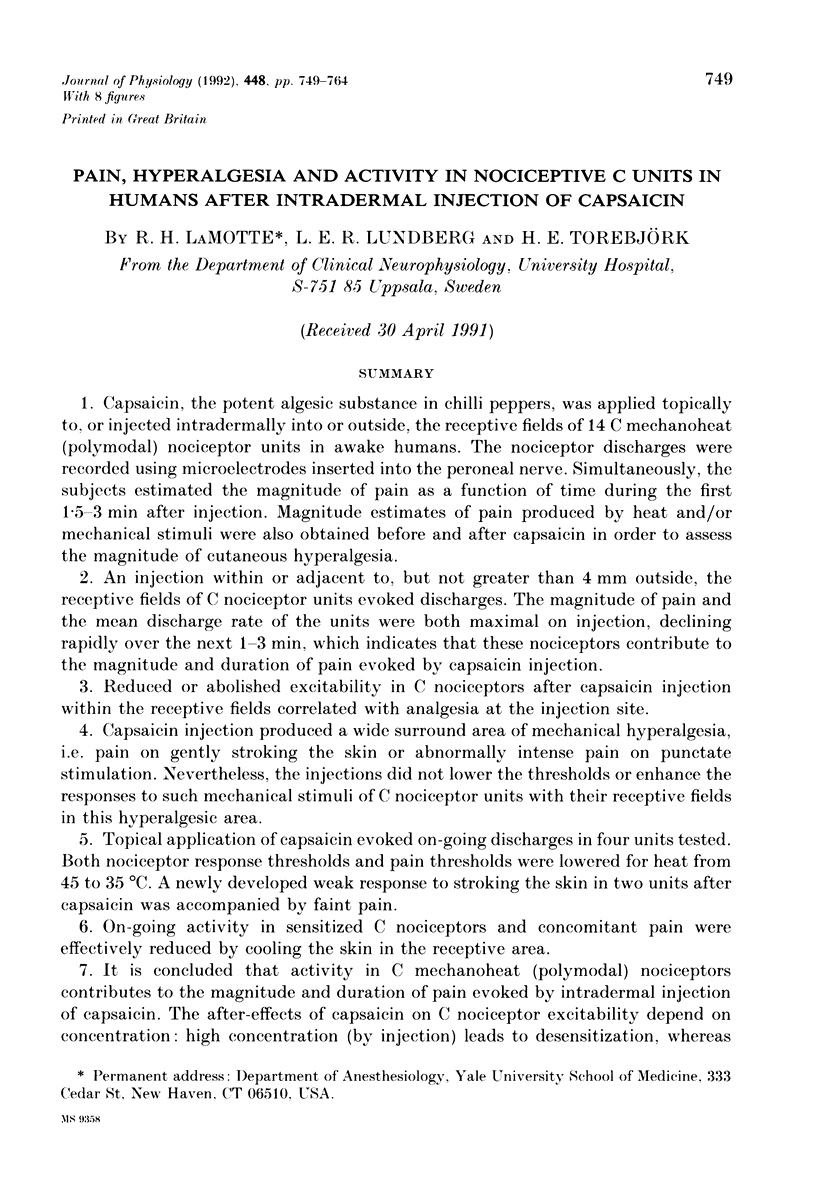
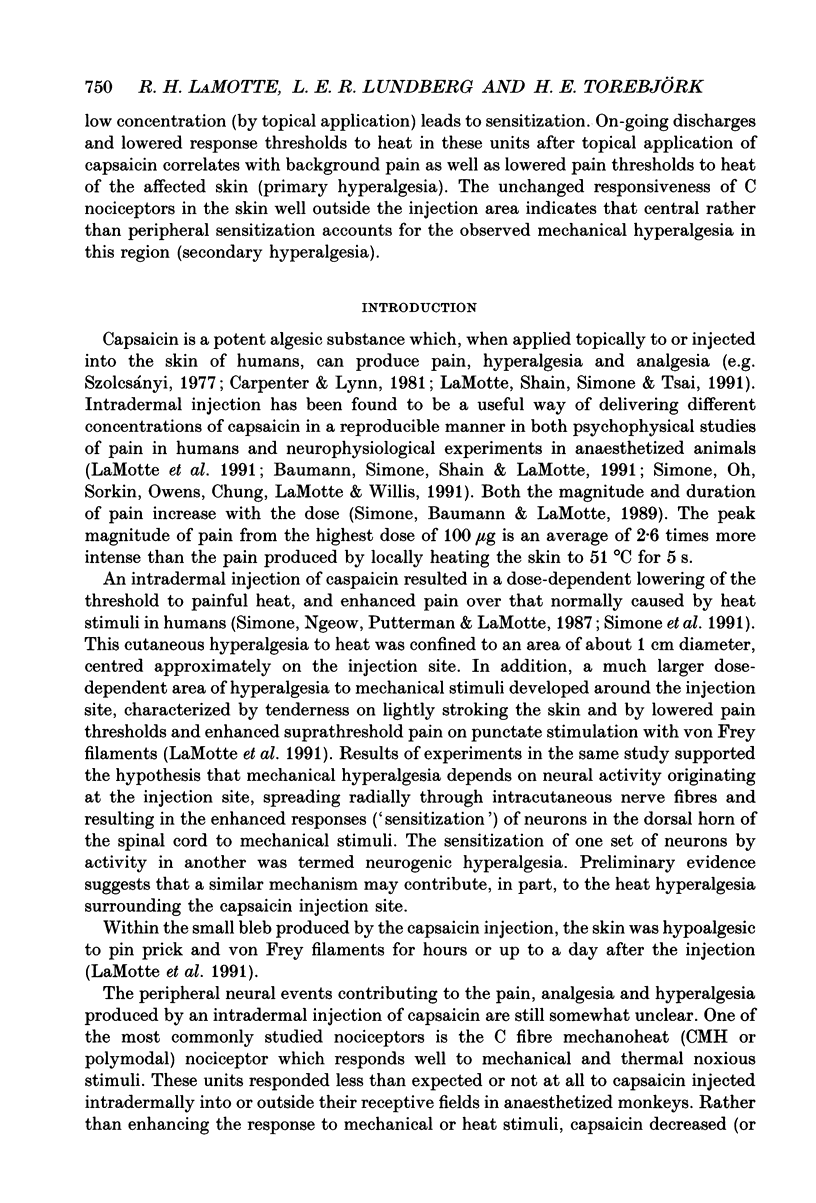
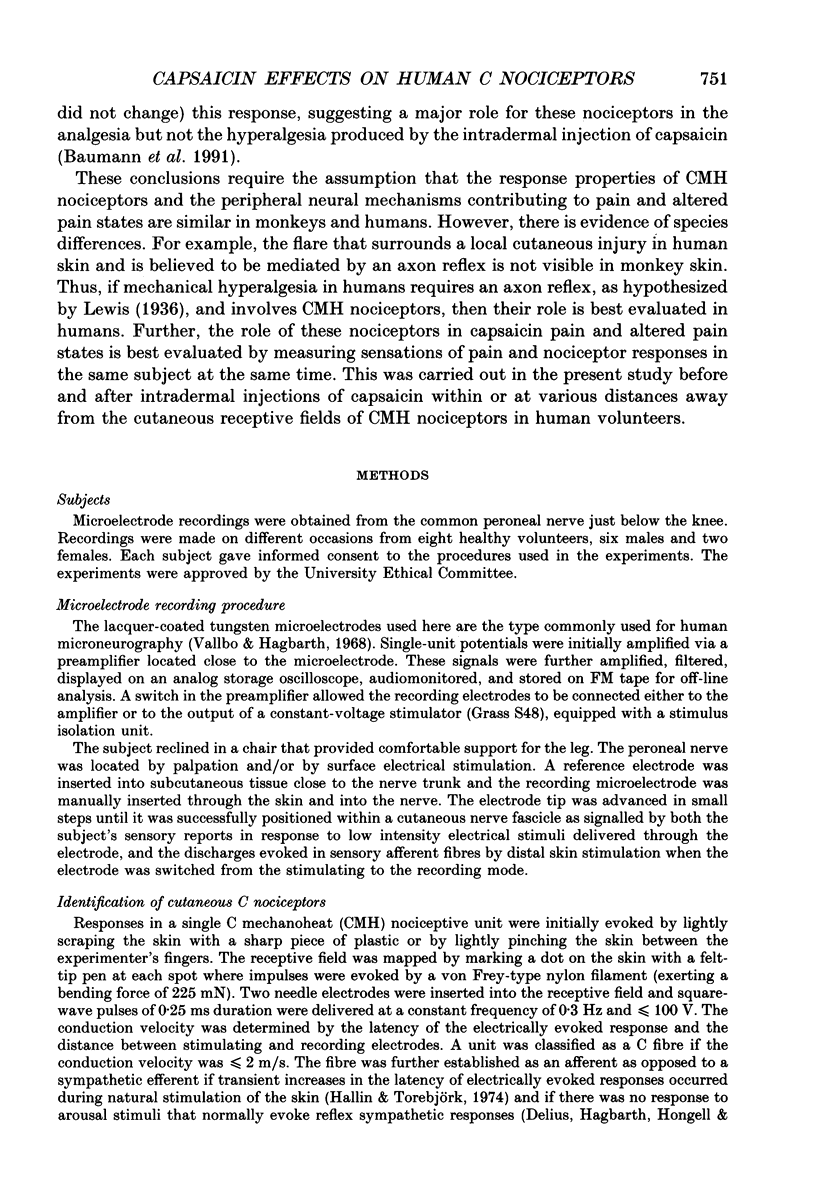
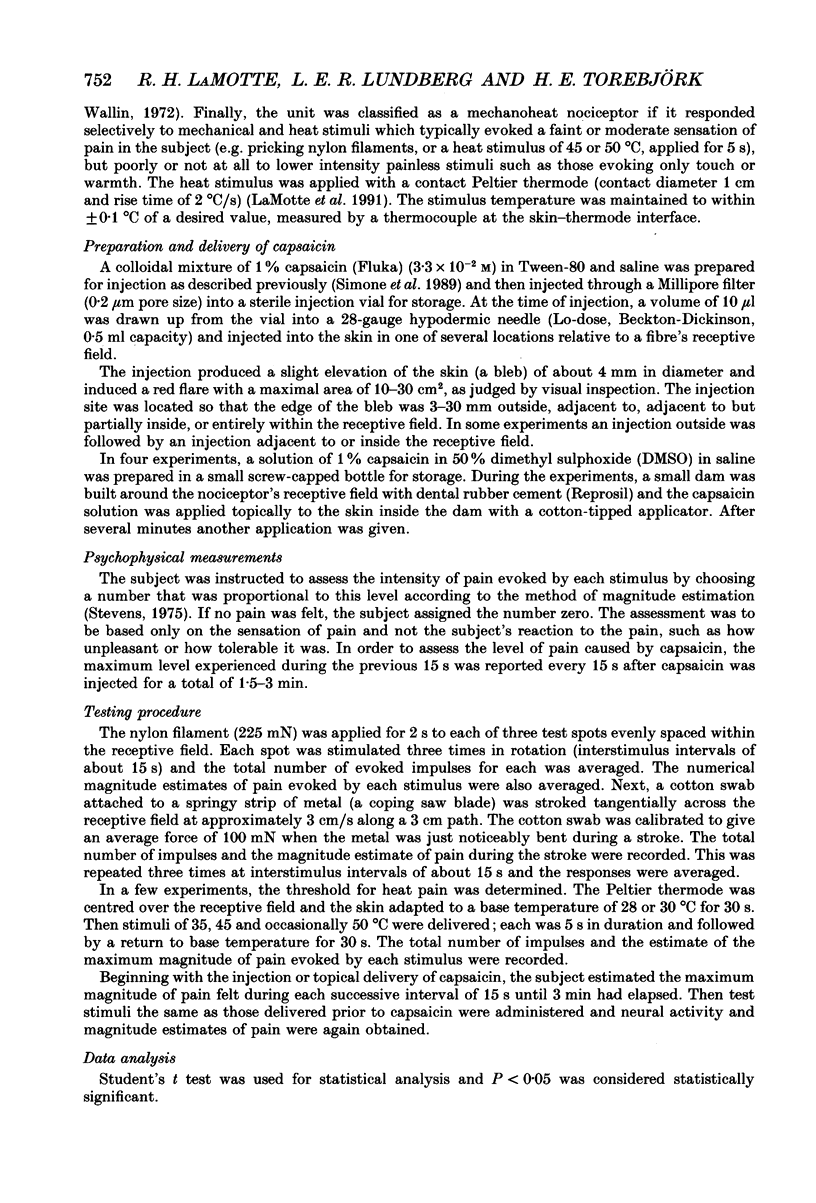
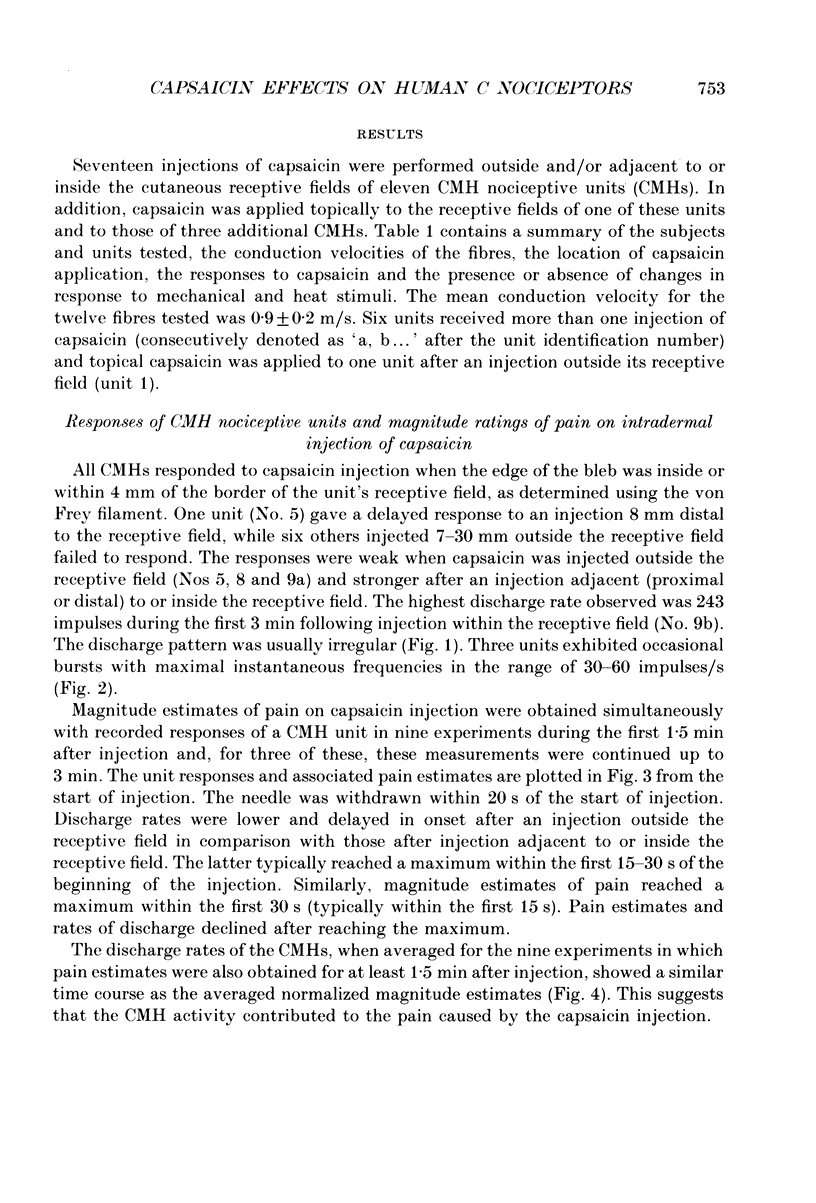
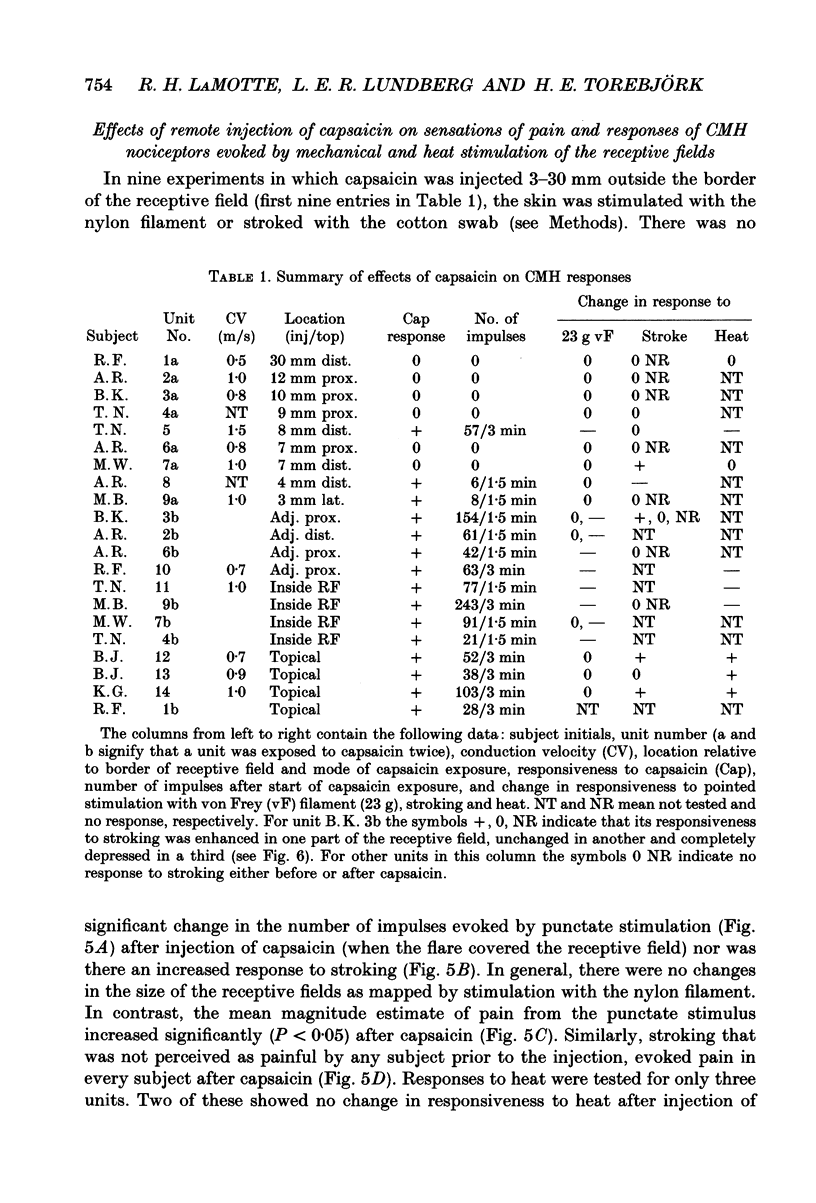
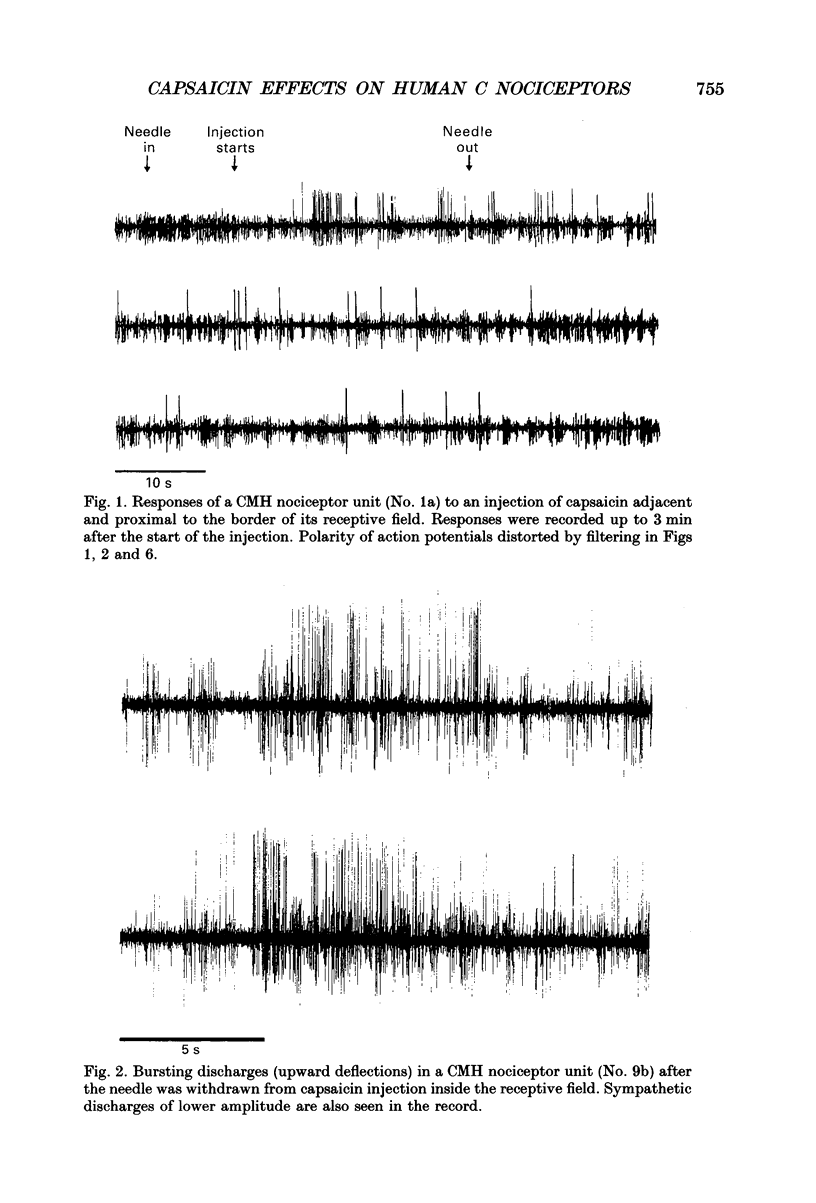
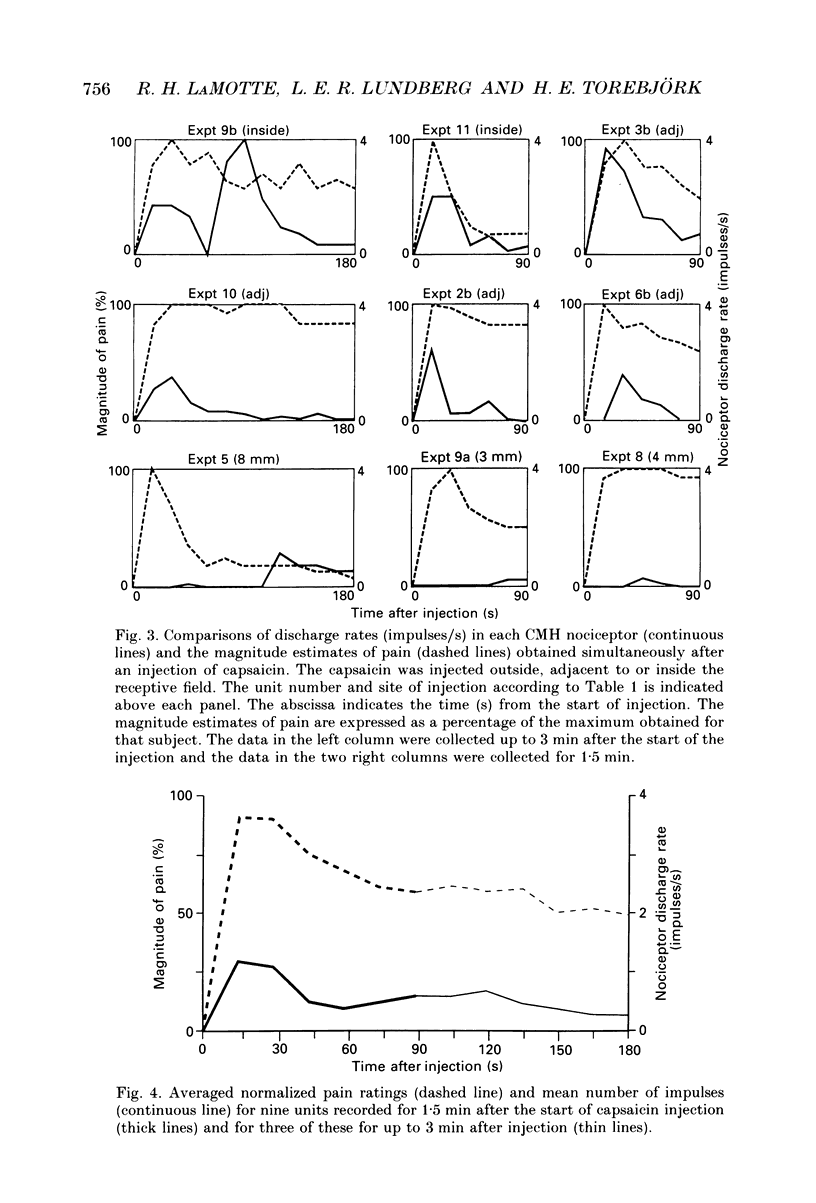
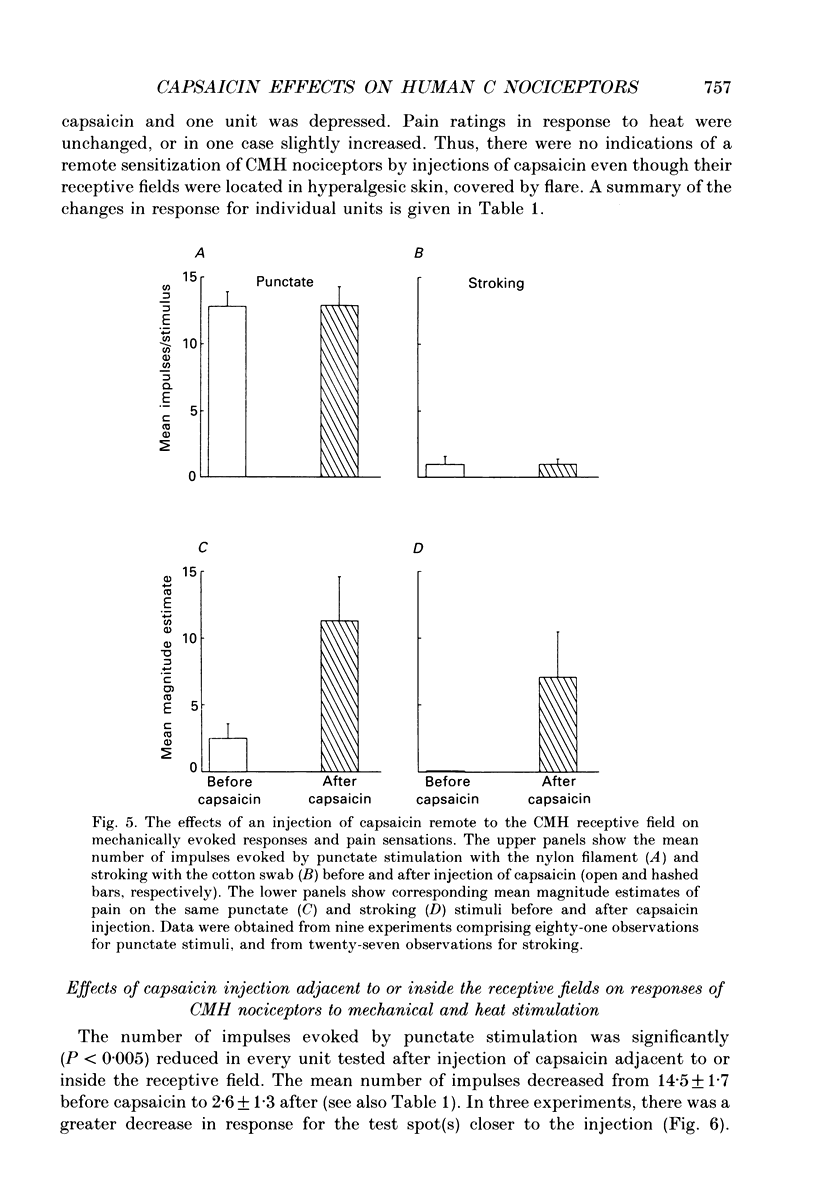
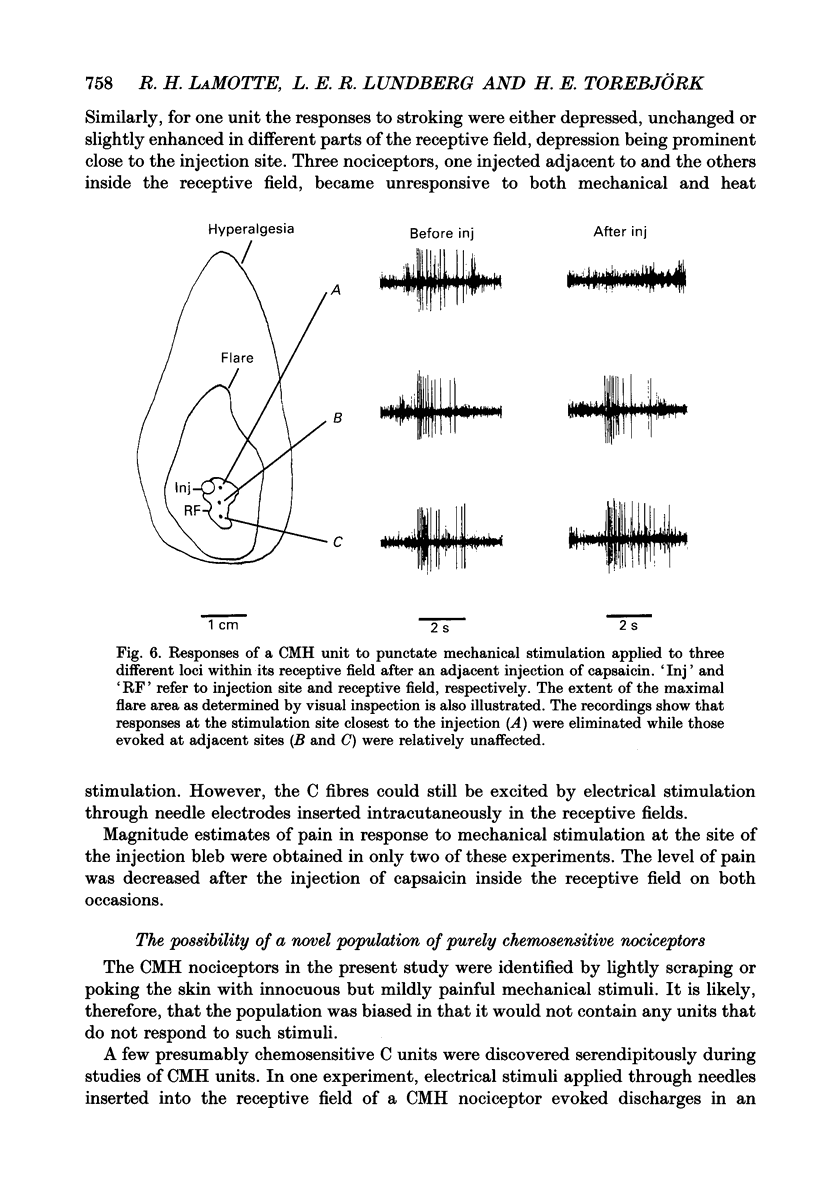
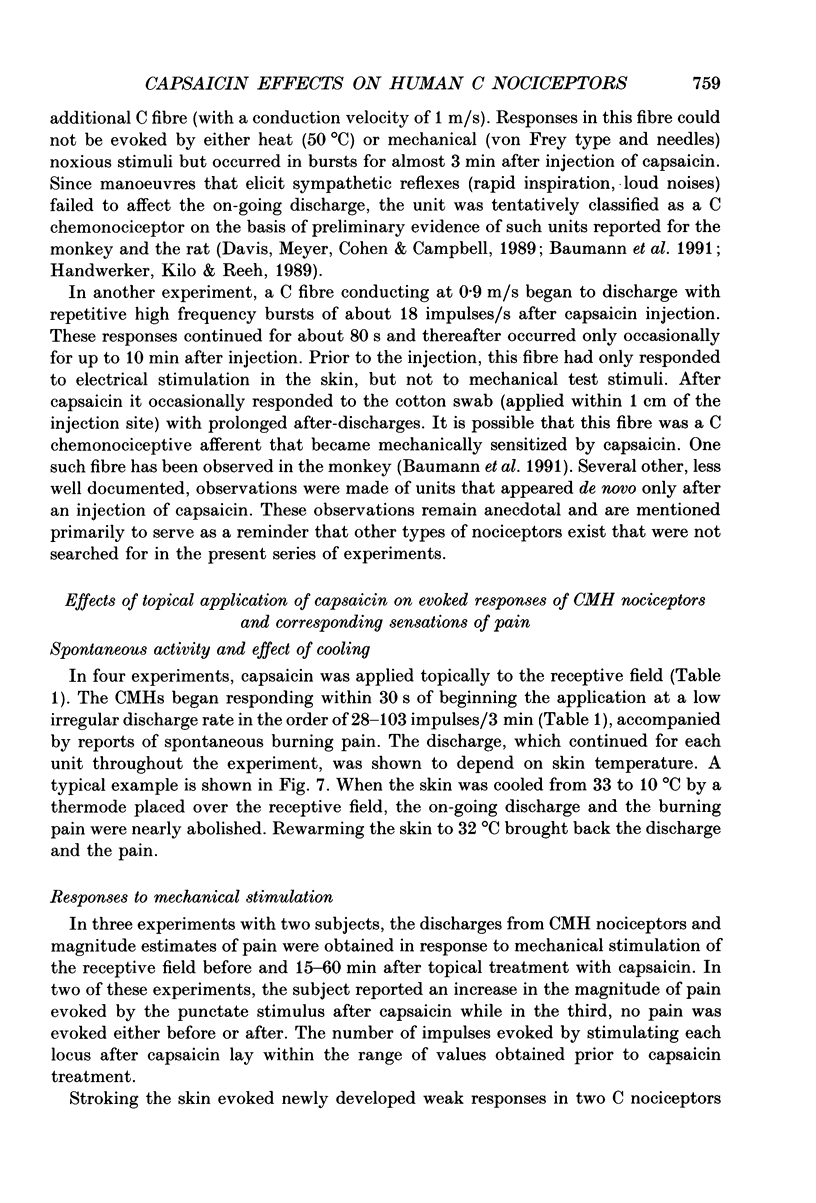
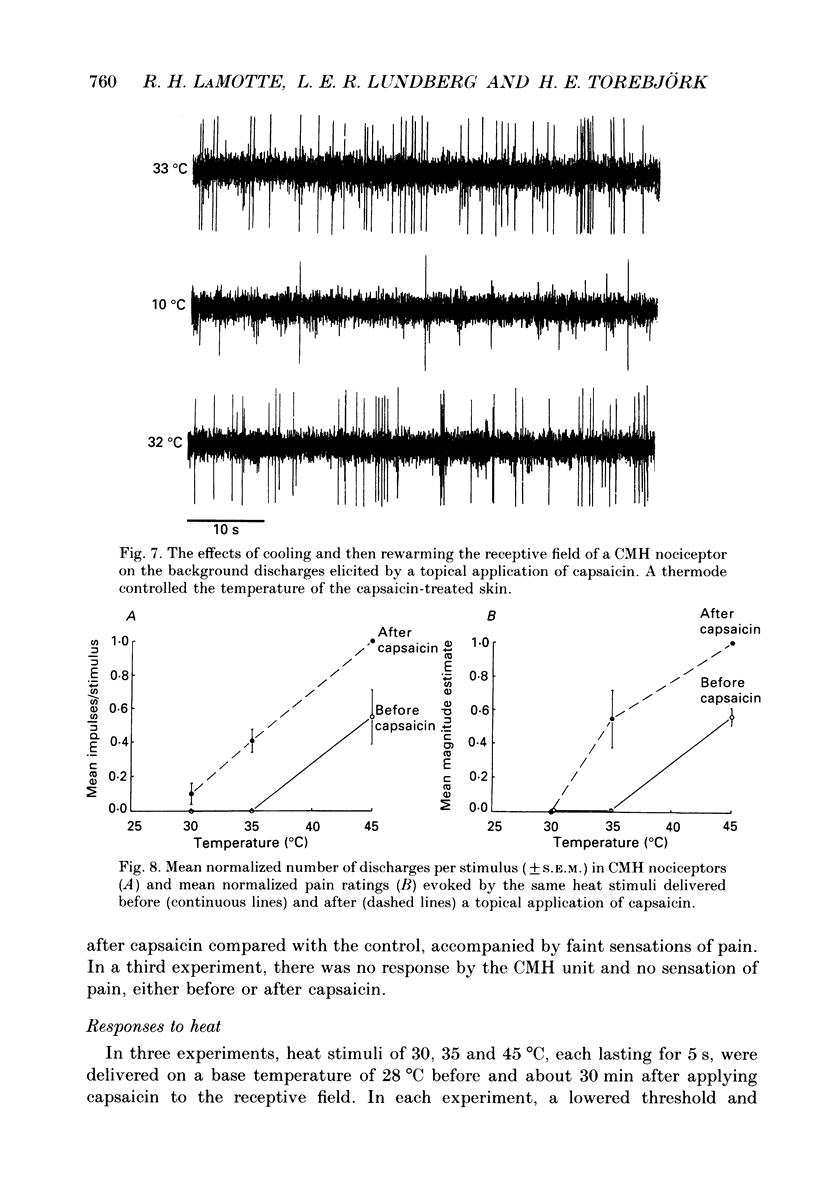
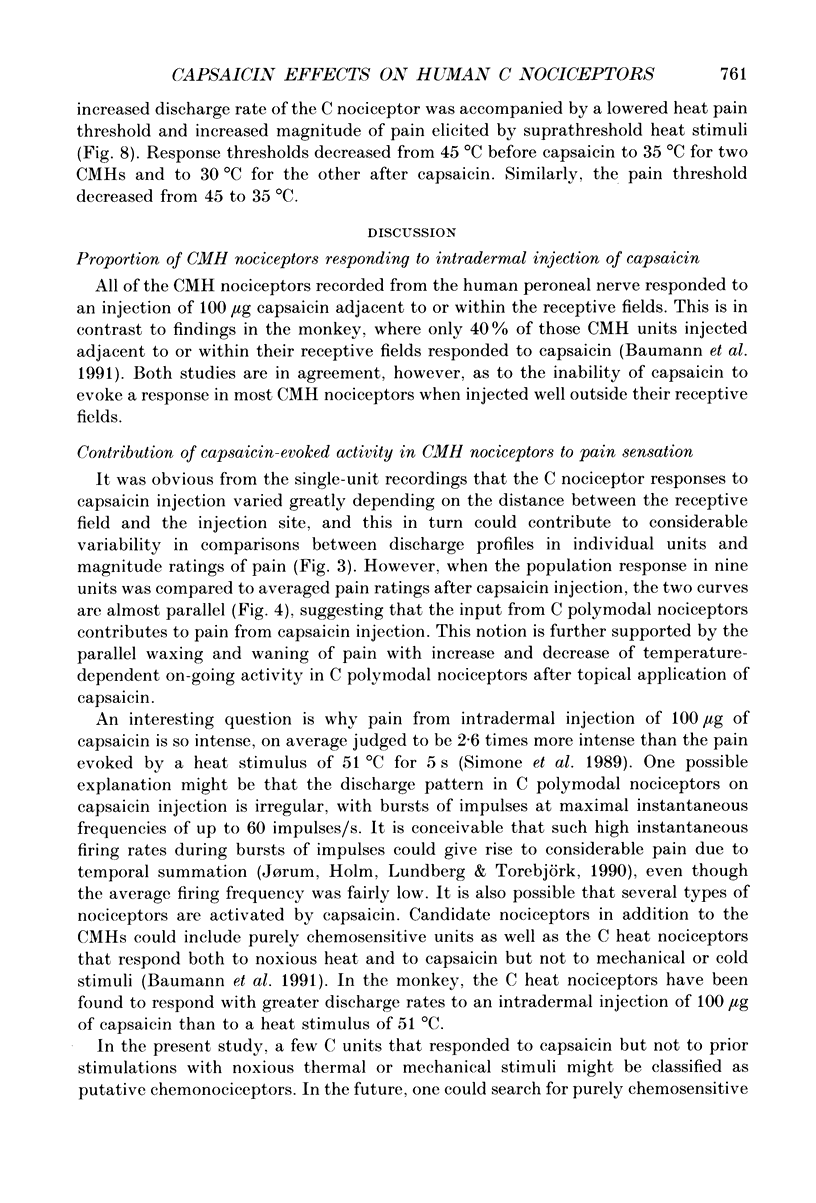
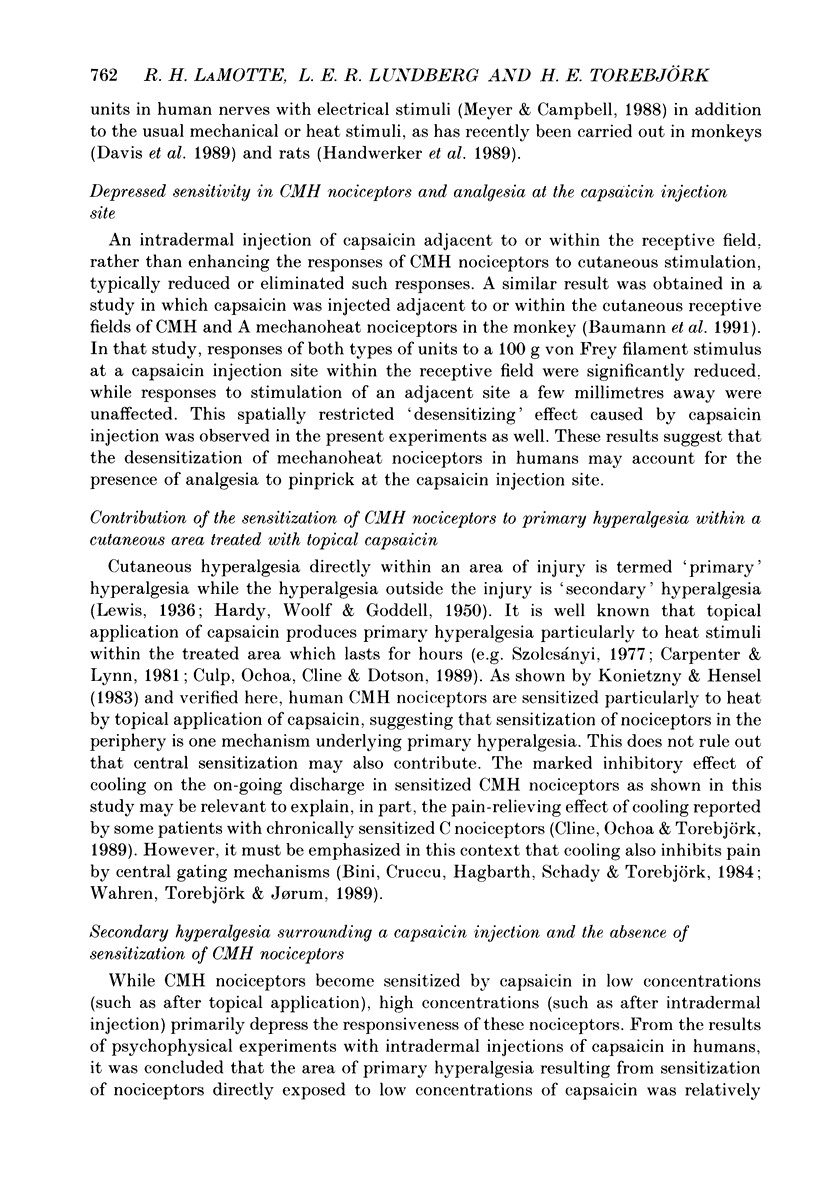
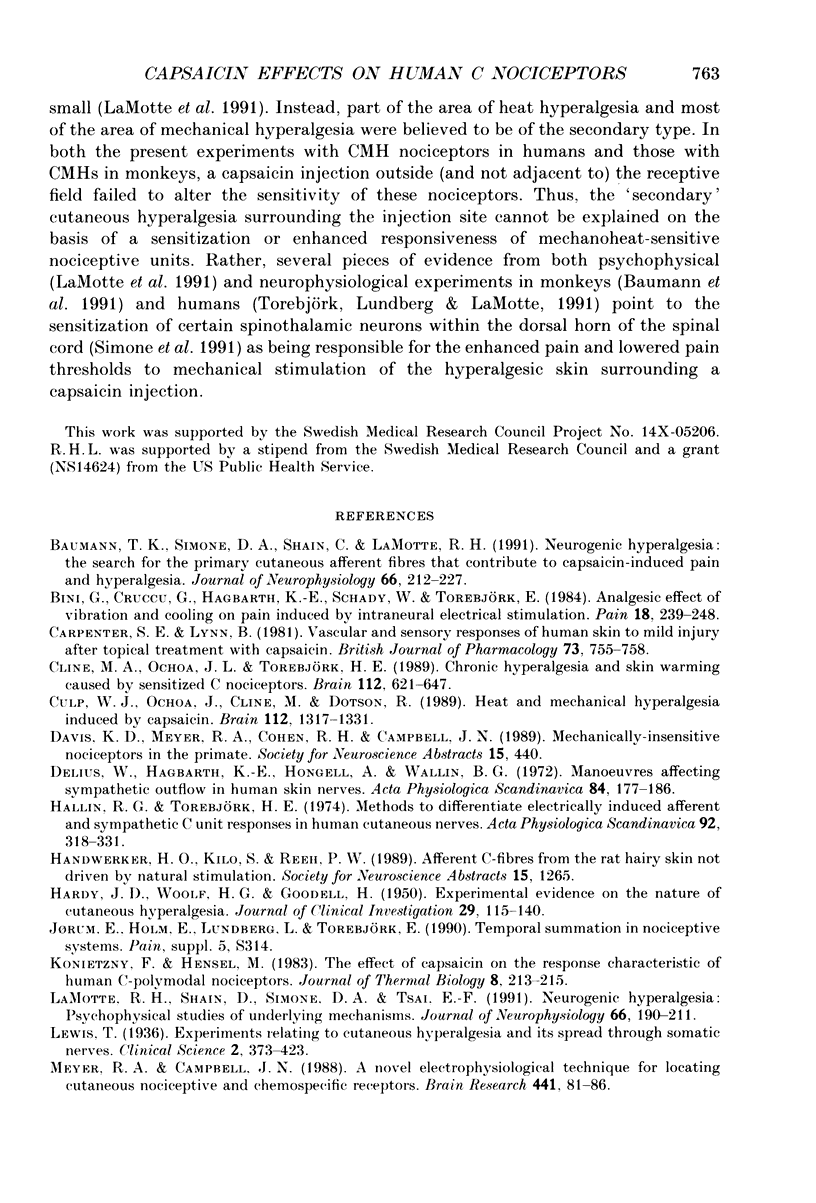
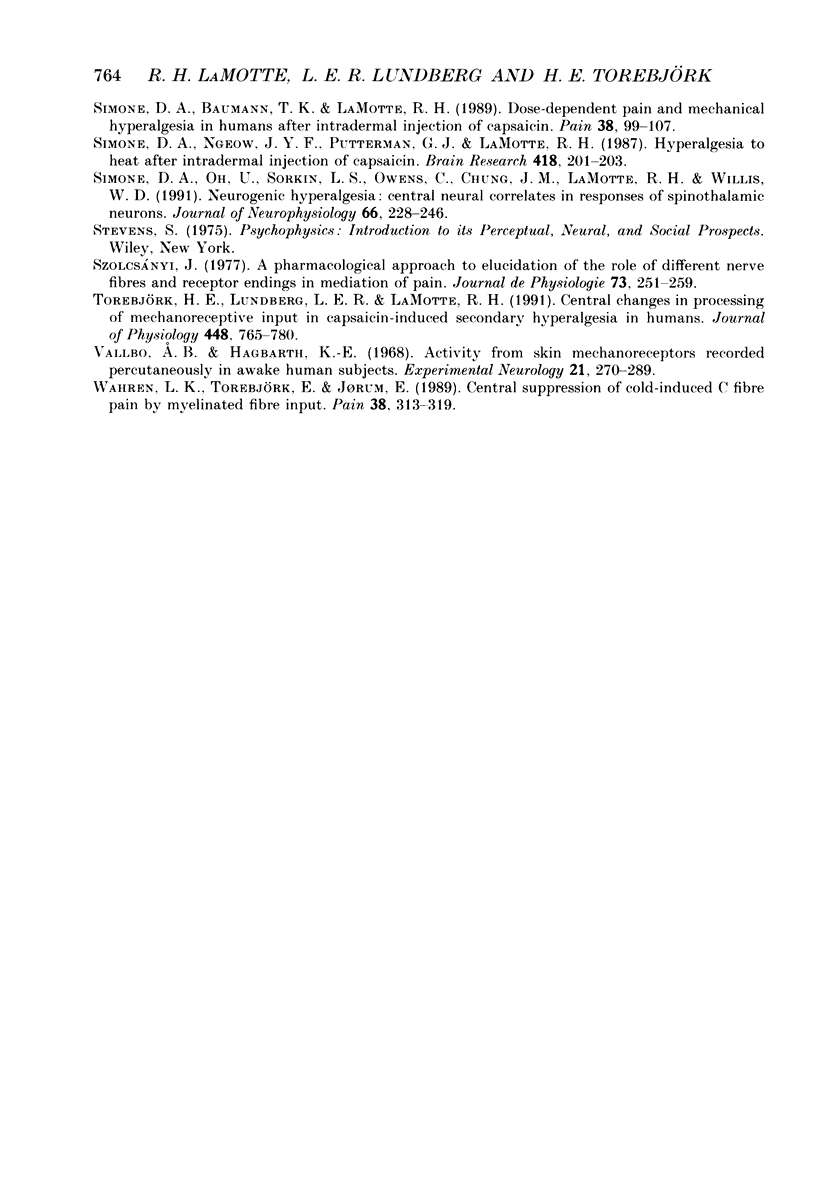
Selected References
These references are in PubMed. This may not be the complete list of references from this article.
- Baumann T. K., Simone D. A., Shain C. N., LaMotte R. H. Neurogenic hyperalgesia: the search for the primary cutaneous afferent fibers that contribute to capsaicin-induced pain and hyperalgesia. J Neurophysiol. 1991 Jul;66(1):212–227. doi: 10.1152/jn.1991.66.1.212. [DOI] [PubMed] [Google Scholar]
- Bini G., Cruccu G., Hagbarth K. E., Schady W., Torebjörk E. Analgesic effect of vibration and cooling on pain induced by intraneural electrical stimulation. Pain. 1984 Mar;18(3):239–248. doi: 10.1016/0304-3959(84)90819-4. [DOI] [PubMed] [Google Scholar]
- Carpenter S. E., Lynn B. Vascular and sensory responses of human skin to mild injury after topical treatment with capsaicin. Br J Pharmacol. 1981 Jul;73(3):755–758. doi: 10.1111/j.1476-5381.1981.tb16812.x. [DOI] [PMC free article] [PubMed] [Google Scholar]
- Cline M. A., Ochoa J., Torebjörk H. E. Chronic hyperalgesia and skin warming caused by sensitized C nociceptors. Brain. 1989 Jun;112(Pt 3):621–647. doi: 10.1093/brain/112.3.621. [DOI] [PubMed] [Google Scholar]
- Culp W. J., Ochoa J., Cline M., Dotson R. Heat and mechanical hyperalgesia induced by capsaicin. Cross modality threshold modulation in human C nociceptors. Brain. 1989 Oct;112(Pt 5):1317–1331. doi: 10.1093/brain/112.5.1317. [DOI] [PubMed] [Google Scholar]
- Delius W., Hagbarth K. E., Hongell A., Wallin B. G. Manoeuvres affecting sympathetic outflow in human skin nerves. Acta Physiol Scand. 1972 Feb;84(2):177–186. doi: 10.1111/j.1748-1716.1972.tb05168.x. [DOI] [PubMed] [Google Scholar]
- HARDY J. D., WOLFF H. G., GOODELL H. Experimental evidence on the nature of cutaneous hyperalgesia. J Clin Invest. 1950 Jan;29(1):115–140. doi: 10.1172/JCI102227. [DOI] [PMC free article] [PubMed] [Google Scholar]
- Hallin R. G., Torebjôrk H. E. Methods to differentiate electrically induced afferent and sympathetic C unit responses in human cutaneous nerves. Acta Physiol Scand. 1974 Nov;92(3):318–331. doi: 10.1111/j.1748-1716.1974.tb05750.x. [DOI] [PubMed] [Google Scholar]
- LaMotte R. H., Shain C. N., Simone D. A., Tsai E. F. Neurogenic hyperalgesia: psychophysical studies of underlying mechanisms. J Neurophysiol. 1991 Jul;66(1):190–211. doi: 10.1152/jn.1991.66.1.190. [DOI] [PubMed] [Google Scholar]
- Meyer R. A., Campbell J. N. A novel electrophysiological technique for locating cutaneous nociceptive and chemospecific receptors. Brain Res. 1988 Feb 16;441(1-2):81–86. doi: 10.1016/0006-8993(88)91385-6. [DOI] [PubMed] [Google Scholar]
- Simone D. A., Baumann T. K., LaMotte R. H. Dose-dependent pain and mechanical hyperalgesia in humans after intradermal injection of capsaicin. Pain. 1989 Jul;38(1):99–107. doi: 10.1016/0304-3959(89)90079-1. [DOI] [PubMed] [Google Scholar]
- Simone D. A., Ngeow J. Y., Putterman G. J., LaMotte R. H. Hyperalgesia to heat after intradermal injection of capsaicin. Brain Res. 1987 Aug 18;418(1):201–203. doi: 10.1016/0006-8993(87)90982-6. [DOI] [PubMed] [Google Scholar]
- Simone D. A., Sorkin L. S., Oh U., Chung J. M., Owens C., LaMotte R. H., Willis W. D. Neurogenic hyperalgesia: central neural correlates in responses of spinothalamic tract neurons. J Neurophysiol. 1991 Jul;66(1):228–246. doi: 10.1152/jn.1991.66.1.228. [DOI] [PubMed] [Google Scholar]
- Szolcsányi J. A pharmacological approach to elucidation of the role of different nerve fibres and receptor endings in mediation of pain. J Physiol (Paris) 1977 Sep;73(3):251–259. [PubMed] [Google Scholar]
- Torebjörk H. E., Lundberg L. E., LaMotte R. H. Central changes in processing of mechanoreceptive input in capsaicin-induced secondary hyperalgesia in humans. J Physiol. 1992 Mar;448:765–780. doi: 10.1113/jphysiol.1992.sp019069. [DOI] [PMC free article] [PubMed] [Google Scholar]
- Vallbo A. B., Hagbarth K. E. Activity from skin mechanoreceptors recorded percutaneously in awake human subjects. Exp Neurol. 1968 Jul;21(3):270–289. doi: 10.1016/0014-4886(68)90041-1. [DOI] [PubMed] [Google Scholar]
- Wahren L. K., Torebjörk E., Jörum E. Central suppression of cold-induced C fibre pain by myelinated fibre input. Pain. 1989 Sep;38(3):313–319. doi: 10.1016/0304-3959(89)90218-2. [DOI] [PubMed] [Google Scholar]


